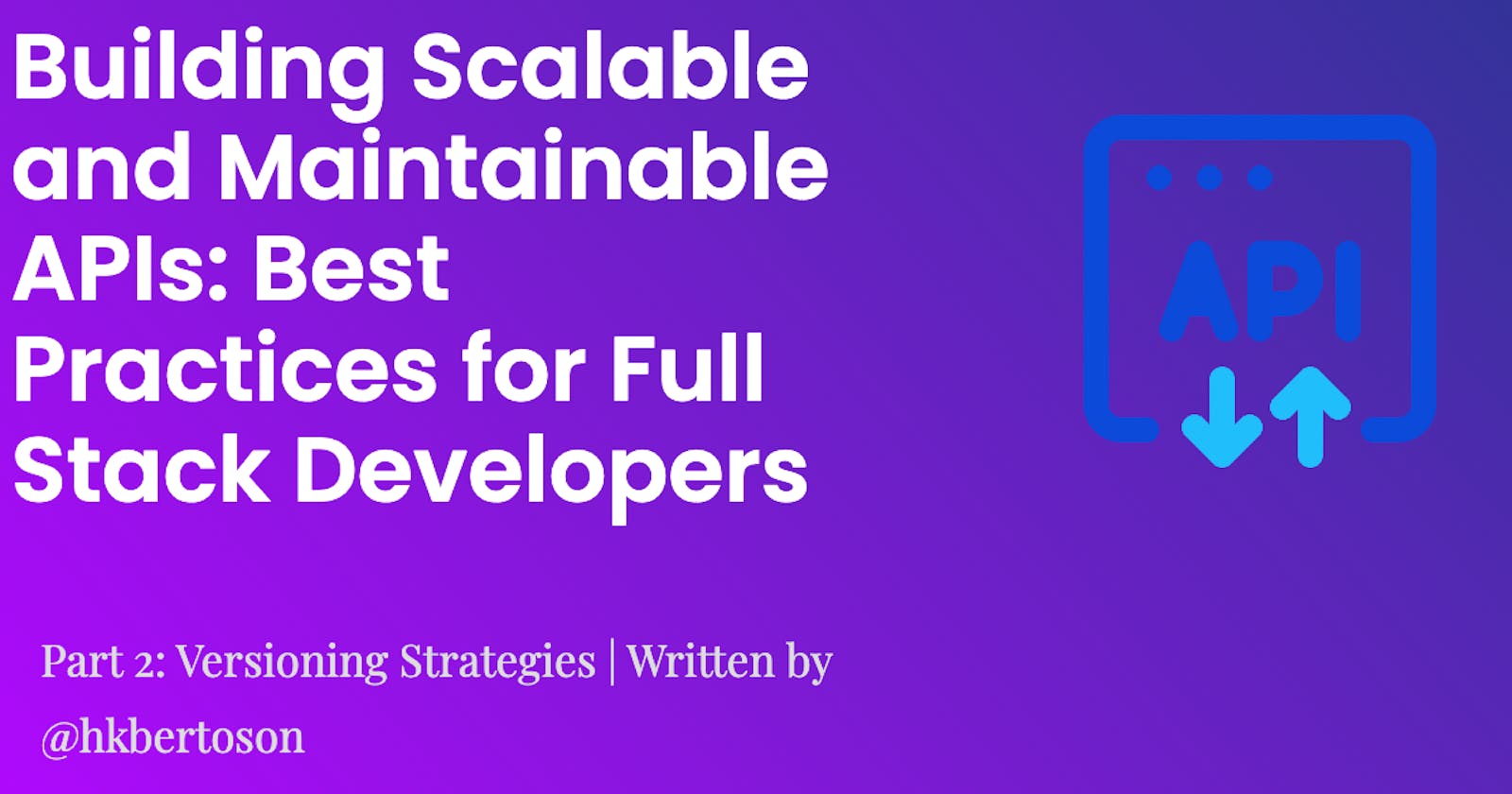Building Scalable and Maintainable APIs: Best Practices for Full Stack Developers
Part 2: Versioning Strategies
If you missed part 1 of the series. You can find the entire series here: https://hkbertoson.hashnode.dev/series/api
API versioning is a critical aspect of API design that allows developers to introduce changes without breaking existing functionality. There are several strategies for versioning APIs, each with its own implications for scalability, maintenance, and compatibility.
Versioning Strategies
URI Versioning
Approach:
In URI versioning, the API version is specified directly in the URI. For example:
/api/v1/users
Implications:
Pros:
Clear and explicting versioning.
Easy identification of the API version in requests.
Cons:
Clutters the URI and may affect readability
Changing the version requries updating all endpoints
Header Versioning
Approach:
The API version is specified in the HTTP headers of the request. For example, using a custom header like Api-Version: 1.
GET /users
Host: api.example.com
Api-Version: 1
Implications:
Pros:
Clean URIs without version clutter.
Flexibility in specifying version information.
Cons:
Requires clients to include version information in headers.
May be less intuitive for developers initially.
Query Parameter Versioning
Approach:
The API version is specified as a query parameter. For example:
GET /users?version=1
Implications:
Pros:
Allows for easy version switching during testing.
Keeps URIs clean.
Cons:
Can be ignored by caching mechanisms, impacting caching effectiveness.
Similar to URI versioning, requires updating all endpoints when version changes.
Accept Header Versioning
Approach:
The API version is specified in the Accept header of the request.
GET /users
Host: api.example.com
Accept: application/example.company.api/v1+json
Implications:
Pros:
Promotes clean URIs.
Provides a standardized approach using MIME types.
Cons:
Requires clients to set the
Acceptheader appropriately.May be less human-readable in comparison to other methods.
Impact on Scalability and Maintenance
Scalability
Positive Impact:
Versioning allows for the gradual rollout of changes, minimizing disruptions to existing clients.
Enables the introduction of performance improvements without affecting older versions.
Challenges:
Maintaining multiple versions concurrently can increase the complexity of the system.
Versioning strategies that result in a high number of concurrent versions might impact scalability.
Maintenance
Positive Impact:
Facilitates ongoing maintenance by providing a structured approach to introducing changes.
Allows for bug fixes and security patches to be applied to specific versions.
Challenges:
The need to support multiple versions can increase the workload for developers.
Poorly managed versioning can lead to confusion and inconsistencies in the API.
Conclusion
Choosing the right versioning strategy involves weighing the trade-offs between clarity, simplicity, and flexibility. While versioning is essential for scalability and maintenance, careful consideration of the chosen approach is crucial to ensure a balance between accommodating changes and providing a stable and consistent API experience.
Come back tomorrow where we will cover Proper Documentation and talk about the importance of clear and up-to-date API documentation. We will also provide tips on using tools like Swagger or OpenAPI for documentation.

